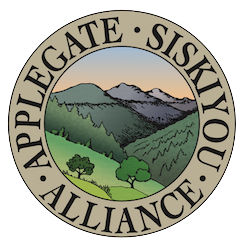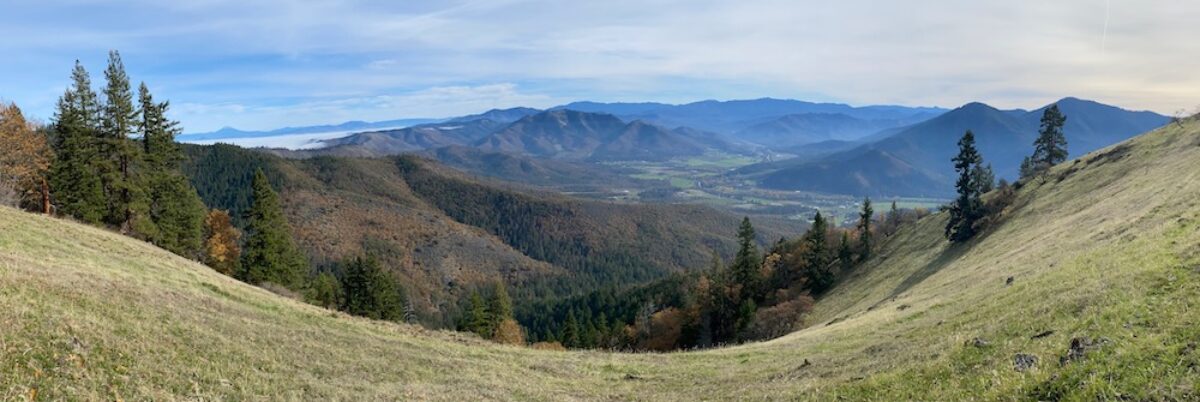
The Medford District BLM has been busy spinning false narratives about their proposed “salvage” logging projects in the Applegate Valley. Claiming to be targeting “dead and dying” stands and trees with the Boaz Salvage Timber Sale, the actual tree removal mark tells a very different story. Yet the BLM simply declaring living, green trees and stands that were largely unaffected by the recent flatheaded fir borer mortality events as “dead and dying,” does not change the reality on the ground — these trees survived the recent beetle outbreaks and have demonstrated either genetic or microsite related resilience.
The BLM has told the public that they must clearcut these stands — leaving, on average, 3.3 trees per acre — and kill these trees to save them from mortality. We find that logic backwards, Orwellian and wildly dishonest. In fact, both the BLM’s blatant lies and the impact of the project to forest habitats in the area are unacceptable. Only by removing all accountability, analysis and public involvement could such clearly false statements be used to justify this project.

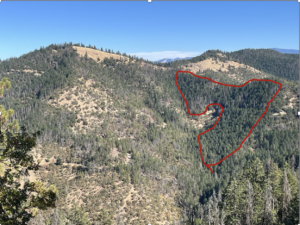
Unfortunately, despite significant public opposition, the BLM recently proposed, retroactively approved, and sold the Boaz Salvage Timber Sale in the Applegate Valley to Mineral Creek Logging and Hauling currently based out of Eagle Point, Oregon.
The public is outraged that BLM can announce a timber sale to the industry and fully design it in a timber sale prospectus before even approving a project or disclosing the effects of the project to the public. People are also outraged that after many years of conflict with the Applegate community over its timber management program, the agency is now resorting to deception and Categorical Exclusions to increase timber production in the face of public opposition.
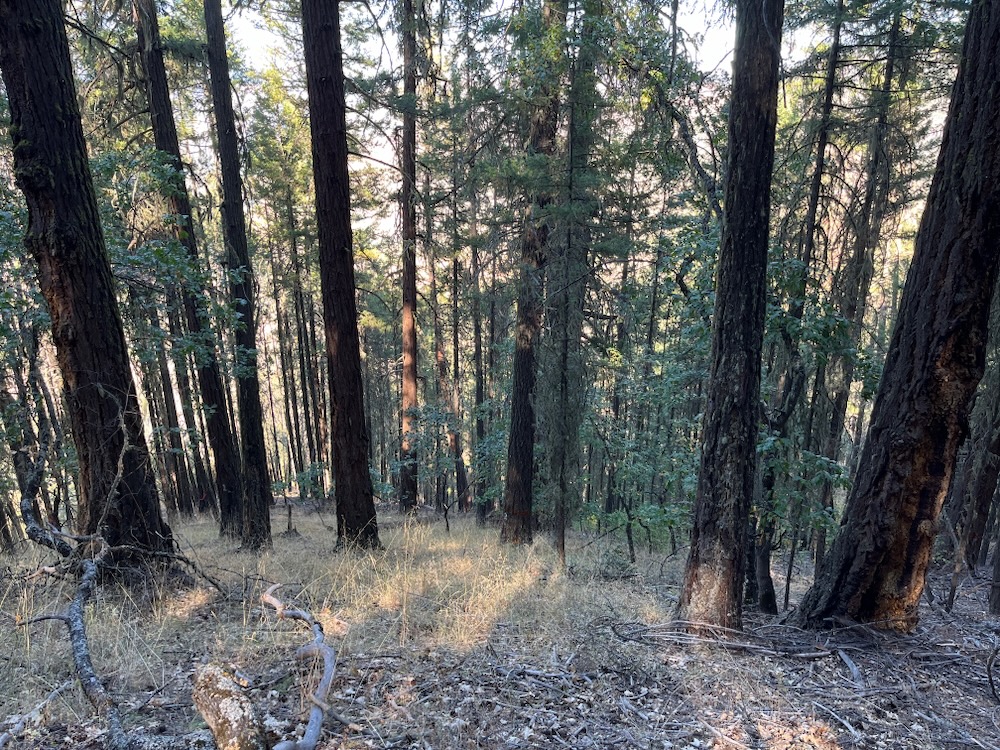
Medford BLM District Manager, Elizabeth Burghard, committed, in writing, back in 2016, to move forward with projects in the Applegate working in the “spirit of the Applegate Adaptive Management Area (AMA).” The Applegate AMA required community-based collaboration and adaptive management; however, Elizabeth has gone back on her word and has instead dismantled collaboration in the Applegate. In fact, in this project the BLM has used exclusionary NEPA processes specifically to avoid any level of public input or accountability.
While the BLM tries to deceive the public, Applegate Siskiyou Alliance will continue bringing you the truth and fighting for the land. The ecological integrity of the Applegate is our highest priority, and our goal is to challenge projects that damage our environment, like the Boaz Salvage Timber Sale. Please support our work as we expose this damaging timber project and oppose its implementation!
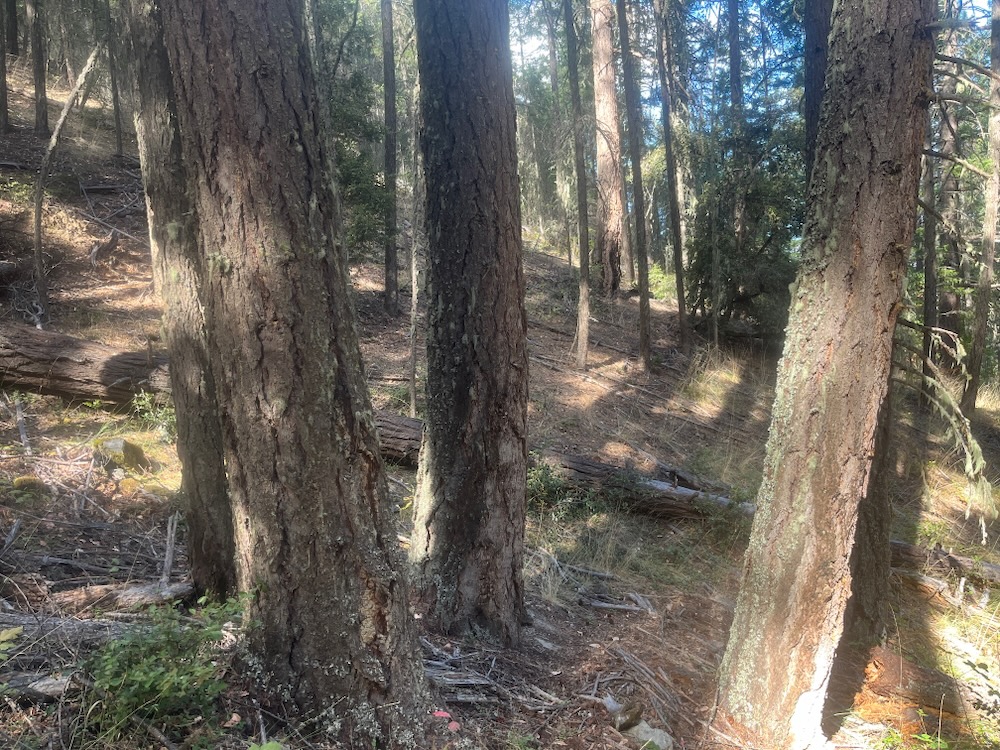
The Boaz Salvage Timber Sale is another shameful timber grab by the BLM. It is also being justified using misleading information, unfounded assumptions, and by cutting the public out of the process. Contact your elected officials and the BLM to express your opposition to the Boaz Salvage Timber Sale.
Get involved! Two things you can do to help us stop the Boaz Salvage Timber Sale:
- ATTEND A FIELD TRIP! Join Applegate Siskiyou Alliance (ASA) as we lead a field trip to the proposed timber sale units. See the misleading narrative of the BLM firsthand and visit the threatened Boaz Salvage Timber Sale with ASA.
Boaz Salvage Timber Sale Field Trip with ASA
When: October 20, 2024 10:00 AM
Where: Meet up in Ruch in the Sunshine Plaza parking lot for the carpool.
What: We will carpool up to the Boaz Salvage Timber Sale where we will stop to look at the proposed timber sale units and discuss the project. Field trip participants can look into most units from the side of the road, but we will also provide optional off-trail opportunities to walk into the units to experience these beautiful forests more closely. Bring trekking poles if you want to walk into the units, as some are fairly steep. Any walk into a unit will be short and less than an 1/8th of a mile.
Please RSVP at the following email to attend the field trip: luke@applegatesiskiyou.org
2. CONTACT BLM land managers and your elected officials!
Medford District Manager, Elizabeth Burghard: eburghar@blm.gov
Field Manager, Lauren Brown: lpbrown@blm.gov
Talking Points:
—Ask BLM to cancel the Boaz Salvage Timber Sale and other so-called logging projects that target living, green trees and stands. Many stands proposed for “salvage” logging are mischaracterized as “dead and dying.”
—Withdraw the inappropriately applied Categorical Exclusion used to authorize the Boaz Salvage Timber Sales. Logging the resilient trees and stands that survived the recent beetle outbreaks is counterproductive, unacceptable, and irresponsible.
—Implement land management activities on BLM lands that respect public involvement, and conduct appropriate levels of scientific and environmental analysis. A Categorical Exclusions does not provide adequate public involvement, analysis, or public disclosure of the project’s environmental effects.
—The BLM must not circumvent the NEPA process to avoid public accountability, the public disclosure of impacts, or to avoid public comment and input. Public lands should be managed with transparency and accountability, and projects of this scope, scale and intensity should be analyzed with at least an Environmental Assessment.
—The environmental impact of proposed project activities are simply too high and should not be approved. The retention of only 3.3 trees per acre and the removal of existing forest canopy, including large diameter trees, will increase fire risks, damage habitat values, and contribute to climate change.
